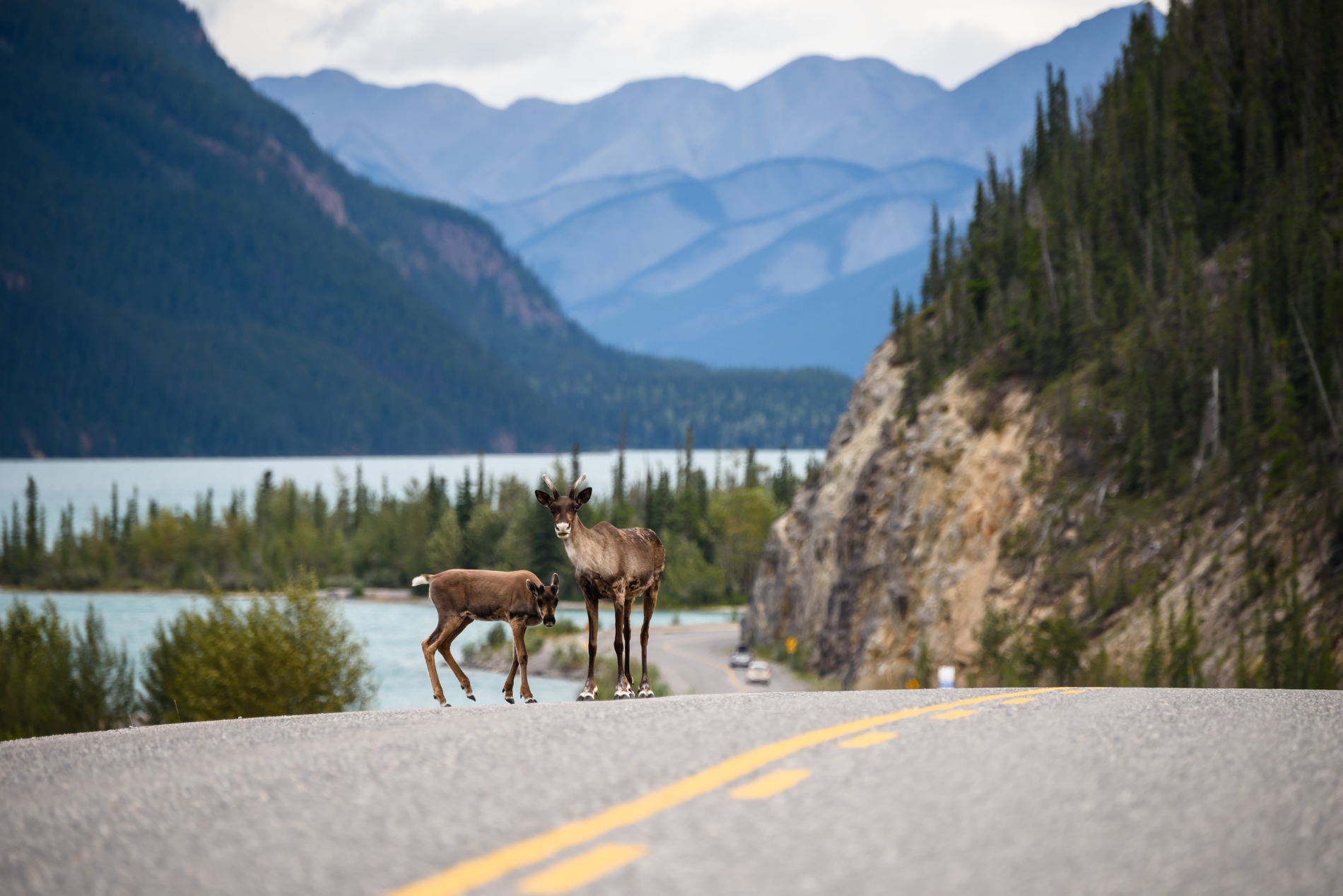Stop 1: T’ooyaḵsiy̓ n̓iin (Welcome)
Anhluut’ukwsim Laxmihl Angwinga’asanskwhl Nisg̱a’a (Nisg̱a’a Memorial Lava Bed Park), is a 17,717-hectare park jointly run by the Nisg̱a’a Nation and BC Parks. Formed as part of the landmark Nisg̱a’a Final Agreement, the park preserves 32 km (20 miles) of lava beds and serves as a memorial to those who lost their lives in the land’s most recent volcanic explosions. Facilities include the Nisg̱a’a Visitor Centre, a 16-spot campground, picnic areas, and hiking trails.
Stop 2: Sii T’ax (Lava Lake)
Stretch your legs at the picnic site and wander down to the shore of the lake. Formed thousands of years ago when a glacier gouged a depression into the valley floor, Sii T’ax was altered when the Tseax volcano erupted. This is when molten lava flowed down toward the lake and dammed its stream, raising the water level and enlarging the picturesque body of water.
Stop 3: Ksi Wil Ksi-Baxhl Mihl (Crater Creek)
Not far past Lava Lake is a roadside parking lot and the start of a short interpretive trail. This 600-metre (1,969 feet) out-and-back trail winds through imposing hills of volcanic rubble covered in colourful lichen. Along the way, signs describe how new soil has formed and trees have begun to grow—a sign of the land slowly healing itself.














